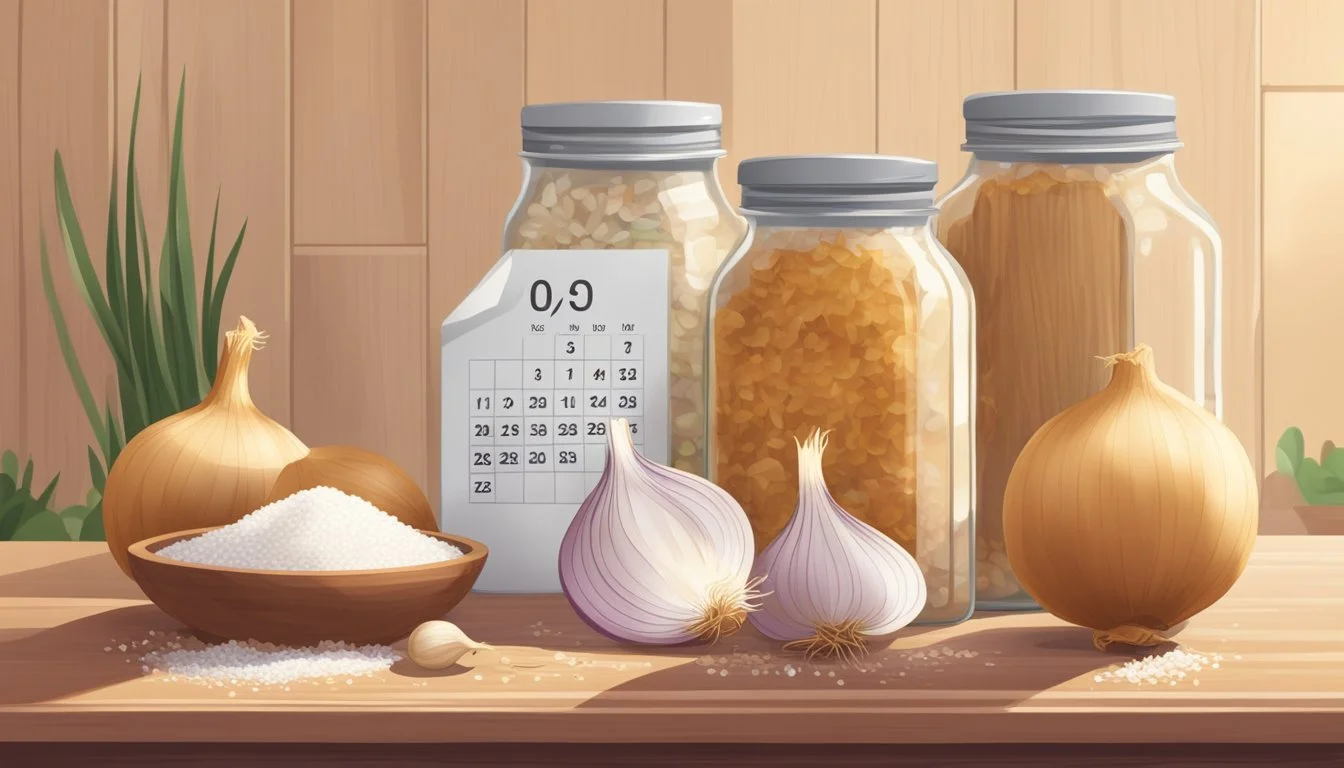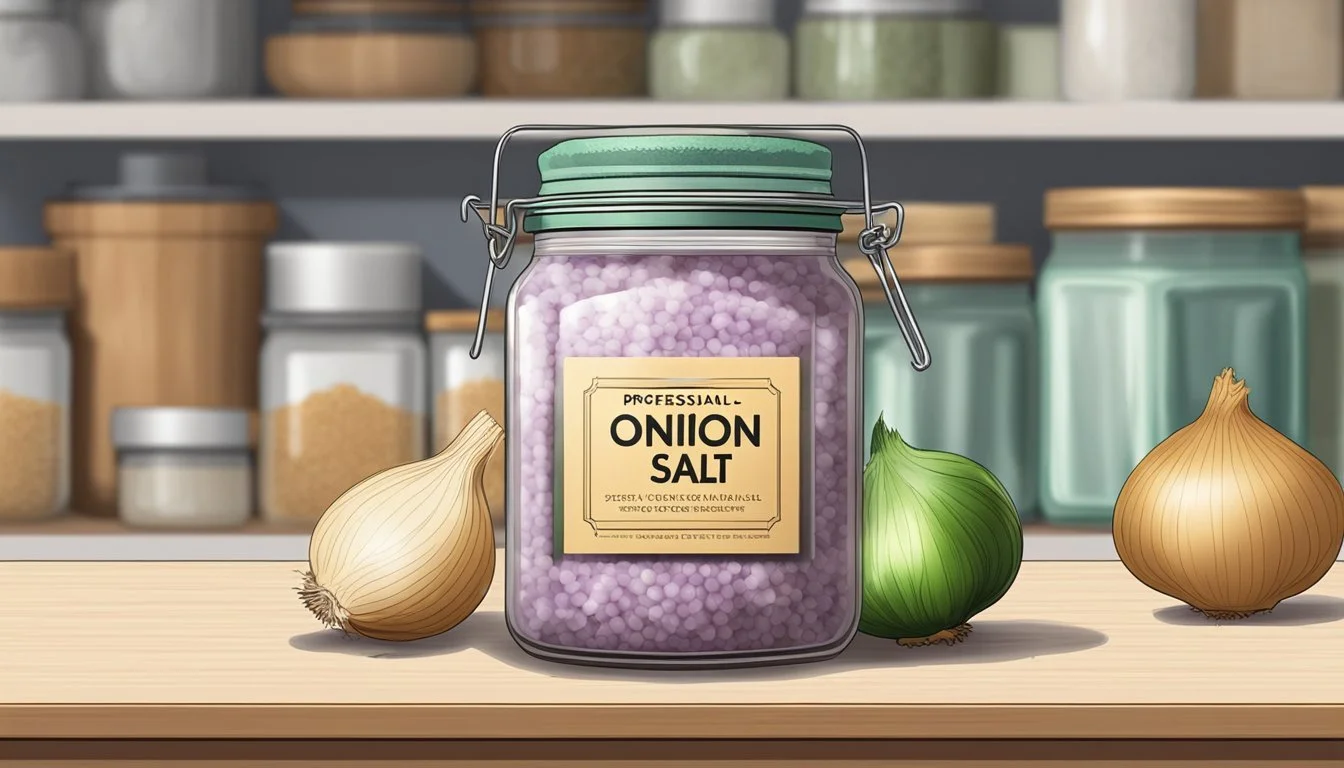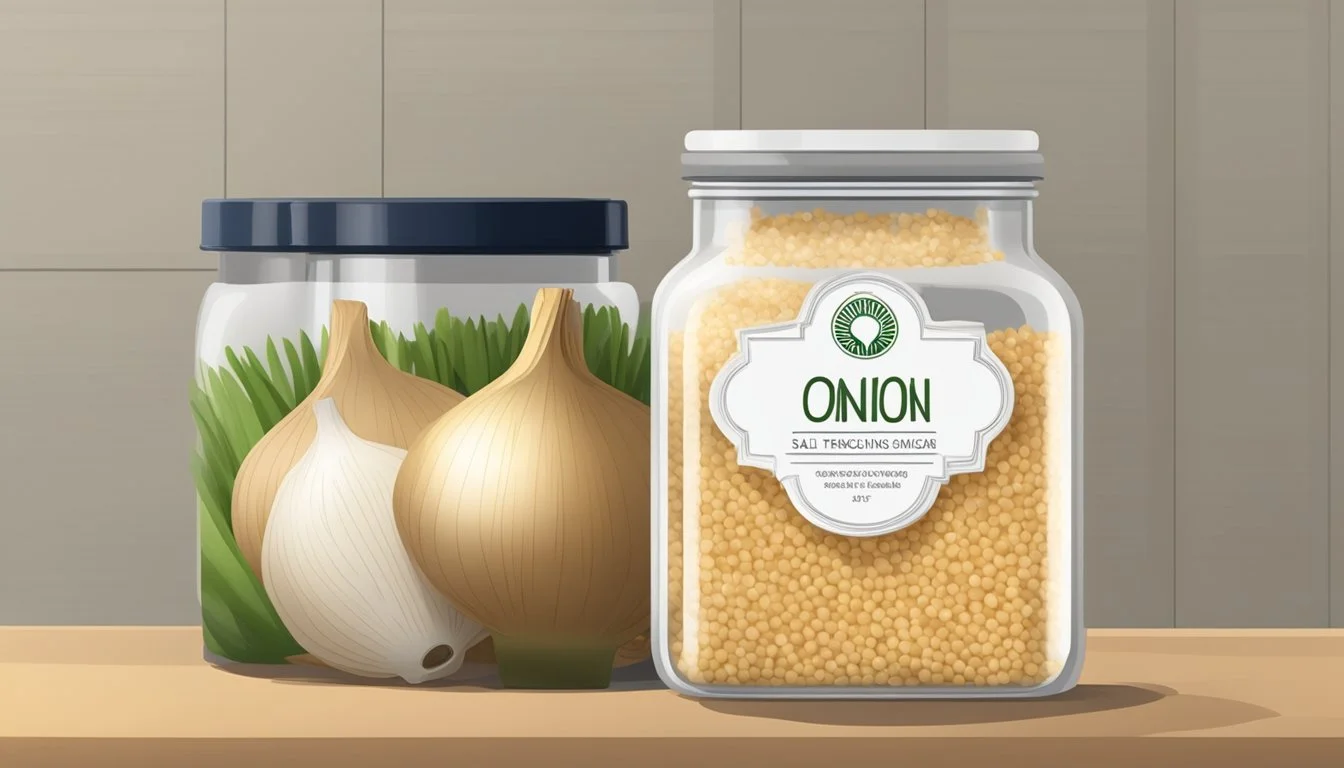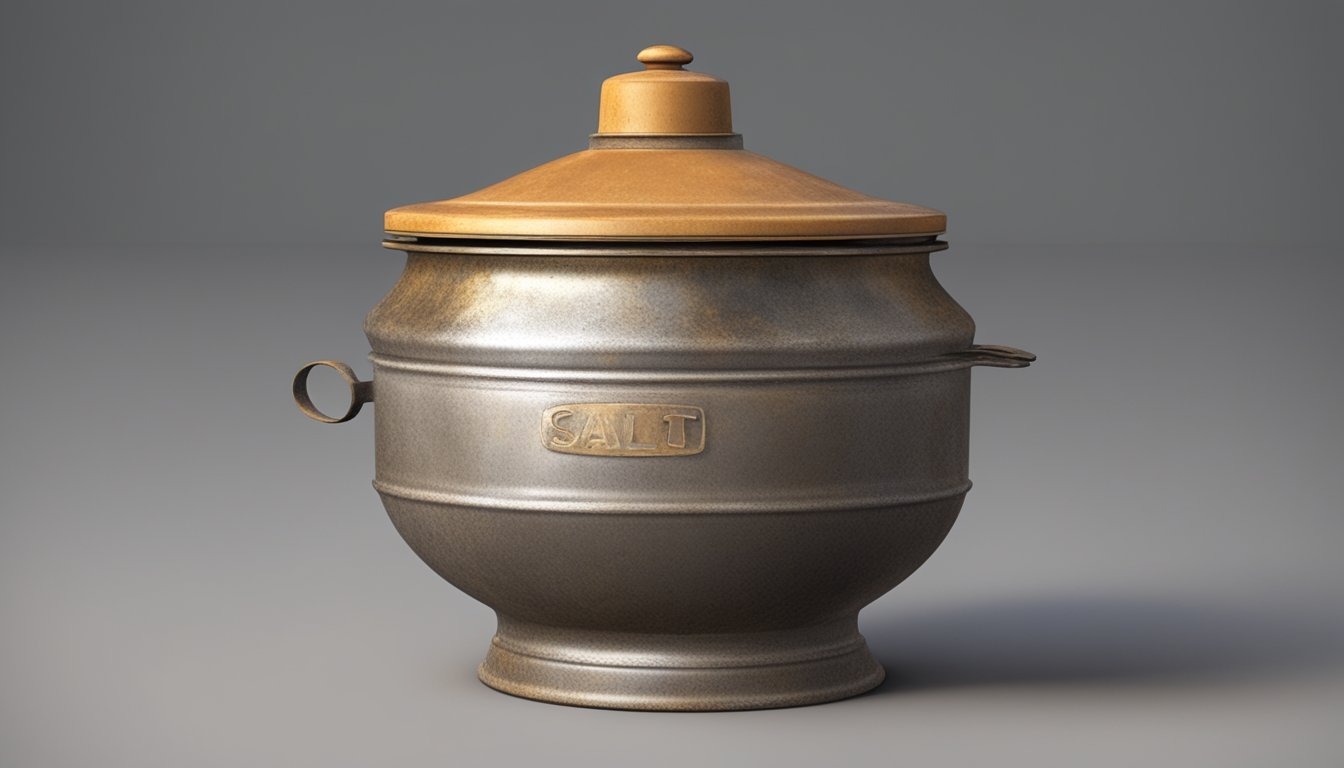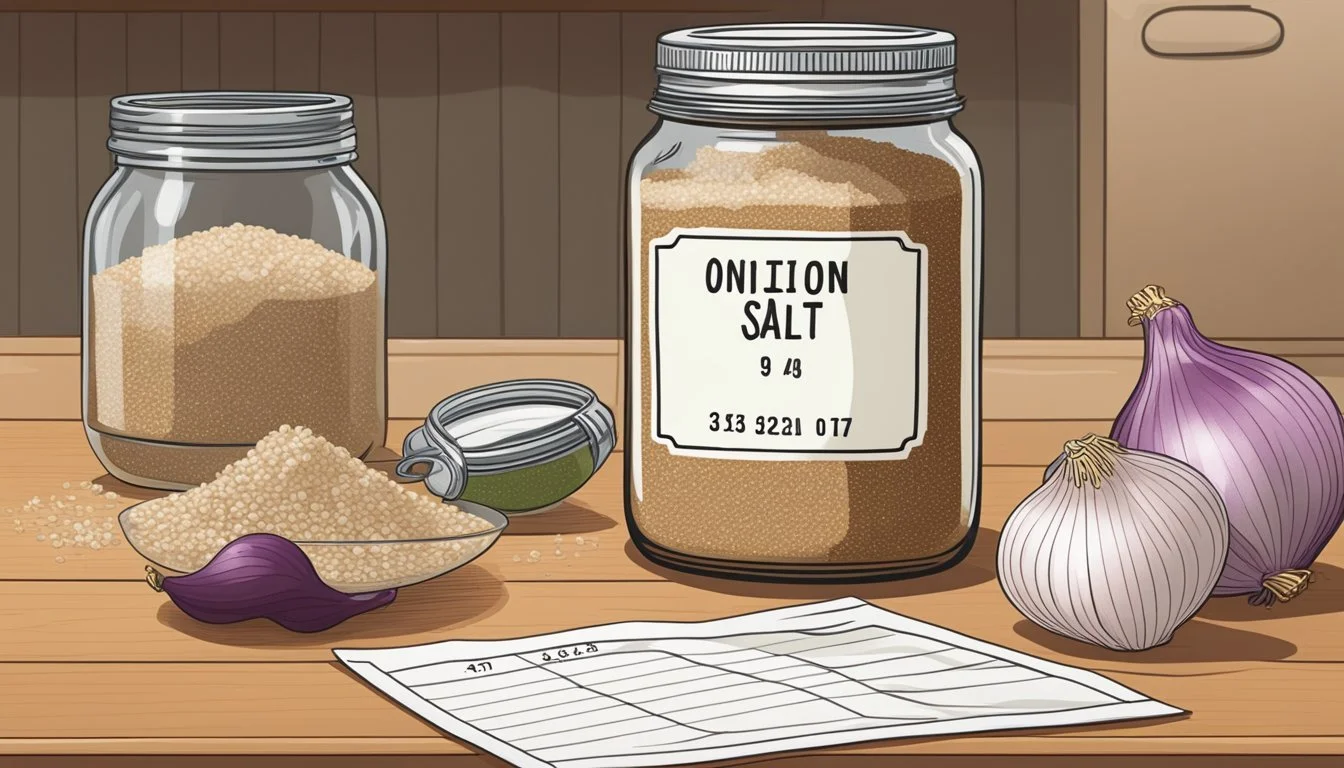How Long Does Onion Salt Last?
Understanding Shelf Life and Storage Tips
Onion salt, a popular seasoning that combines salt with onion powder (how long does onion powder last?), offers a convenient way to enhance the flavor of various dishes. Understanding its shelf life is important for maintaining the quality and taste of this seasoning. As a blend, onion salt's longevity is influenced both by the durability of salt, which can last indefinitely if kept in cool, dry conditions, and the shelf life of onion powder, which is typically shorter.
Generally, onion powder can last about 3 to 4 years if stored correctly. Therefore, the shelf life of onion salt is likely to align more closely with the shelf life of the onion component of the mixture, provided it is kept in an airtight container away from moisture and direct sunlight. It's essential to consider that while the salt portion does not expire, the flavor and potency of the onion powder will diminish over time, which in turn affects the overall flavor profile and effectiveness of the onion salt.
For optimal taste and quality, consumers should note the best before date on the packaging and understand that, while it may still be safe to consume onion salt after this date, its peak flavor may have lessened. Proper storage—a cool, dry place away from heat and light—will extend its shelf life, ensuring that onion salt remains a reliable addition to one's spice collection.
Composition of Onion Salt
Onion salt is a seasoning blend primarily composed of two main ingredients: ground onion and salt. It is known for its ability to impart a savory onion flavor along with the seasoning capabilities of salt.
Ingredients:
Ground Onion: Dehydrated onions ground into a fine powder.
Salt: Can be either table salt, kosher salt, (how long does kosher salt last?) iodized salt (how long does iodized salt last?), sea salt (how long does sea salt last?), or rock salt (how long does rock salt last?).
The type of salt used in onion salt affects the flavor and texture:
Table Salt: A fine-grained salt, often with added iodine, provides a uniform salty flavor.
Kosher Salt: Larger, flakier crystals offer a milder taste and are commonly used in cooking.
Sea Salt: Obtained by evaporating seawater, has a more complex flavor profile due to trace minerals.
Rock Salt: Mined from salt deposits, it has larger, chunkier crystals and a potent taste.
In addition to these components, onion salt may contain:
Anti-Caking Agents: Such as calcium silicate, these substances are included to prevent clumping and ensure free-flowing granules.
Proportions:
Typically, onion salt is made by mixing three parts salt with one part ground onion, though this can vary by brand or homemade recipes. Seasoned salt (how long does seasoned salt last?) blends might include additional herbs or spices for more complex flavors.
Applications:
This seasoning is versatile, enhancing a rich depth to various dishes and marrying the sharp tang of onion with the flavor-enhancing properties of salt. Whether it's sprinkled on vegetables, meats, or incorporated into sauces, onion salt is a staple in many recipes for its convenience and consistent taste.
Factors Affecting Shelf Life
The shelf life of onion salt is influenced by several distinct factors. Attention to moisture levels, temperature control, and avoidance of contaminants are crucial for preserving its quality.
Moisture and Onion Salt
Moisture is the nemesis of onion salt's longevity. When exposed to moisture, onion salt can clump and may become a breeding ground for bacteria and mold. To prevent moisture from compromising its quality, it should be stored in an airtight container to maintain dryness. Hygroscopic by nature, onion salt absorbs moisture from the environment, which is why storage in a dry pantry is recommended over refrigerating.
Temperature and Storage Conditions
The shelf life of onion salt can be maximized by storing it at a stable and moderate temperature. The ideal storage temperature is a cool pantry, typically between 60 to 70 degrees Fahrenheit (15 to 21 degrees Celsius). Higher temperatures can degrade its quality over time. Therefore, onion salt should not be stored near heat sources or in direct sunlight.
Contaminants and Preservatives
To prolong the shelf life of onion salt, one must ensure it remains free from contaminants. Each time onion salt is used, it should be poured or spooned out to avoid introducing contaminants from utensils or hands. Containers should be kept sealed when not in use. Onion salt typically contains preservatives that inhibit the growth of bacteria and mold. It's important to use onion salt before the expiration date to ensure that the quality has not been compromised despite the inclusion of these preservatives.
Determining Shelf Life
When it comes to onion salt, understanding its shelf life is crucial to ensure both its flavor potency and safety for consumption. This section details how to determine the shelf life of onion salt with reference to expiration dates and manufacturer guidelines.
Expiration and Best-By Dates
Onion salt is a seasoning blend combining salt with onion powder and, sometimes, additional herbs and anti-caking agents. The component that dictates the shelf life of onion salt is the onion powder, which is subject to deterioration over time.
Expiration Date: Generally, onion salt doesn’t have a strict expiration date because it is a dry, shelf-stable product. However, degradation in flavor can be considered as functional expiry.
Best-By Dates: Manufacturers often provide a best-by date, which signals how long the product is expected to maintain optimal quality. After this date, while not necessarily harmful, the onion salt may lose its potency.
Manufacturer Recommendations
To accurately assess the shelf life, one should consider the recommendations provided by the manufacturer. These are based on optimal storage conditions and the composition of the onion salt.
Recommendations: Most manufacturers suggest that onion salt can last between 2 to 3 years if stored properly. This duration is a guideline to maintain optimal flavor and quality.
Considerations: Factors such as the presence of moisture, heat, and exposure to light can shorten the lifespan of onion salt. Therefore, following storage advice is essential for maintaining its shelf life.
Storing Onion Salt for Longevity
When considering the storage of onion salt, one must prioritize maintaining its flavor and preventing clumping. This is achievable through the use of appropriate storage containers and adherence to best storage practices.
Ideal Storage Containers
For optimum preservation, onion salt should be kept in an airtight container. A variety of materials can be suitable, such as glass or heavy-duty plastic, but the seal is crucial to prevent moisture from affecting the product. Spice containers with a shaker top are convenient for everyday use, while larger batches may require mason jars with screw-top lids or airtight clip-top containers.
Glass Jars: They don't retain odors and are easy to clean, ensuring the purity of the onion salt.
Heavy-Duty Plastic: A more durable, lightweight option if there's concern about glass breakage.
Airtight Lids: Essential to prevent moisture and contaminants.
Spice Containers: Ideal for regular use, should still be stored within a pantry for added protection.
Best Practices in Storage
For best results, place your onion salt in a cool, dry area such as a pantry. Exposure to heat or direct sunlight can degrade the quality and potency of the onion salt.
Keep away from stovetops and high humidity: This will ensure longevity and prevent caking.
Avoid using plastic bags unless they are specifically designed for preserving spices and can be sealed effectively.
Adding a desiccant, like an oxygen absorber packet or a few grains of rice, can absorb any accidental moisture and preserve the integrity of the onion salt.
Label and date the container: This helps in tracking freshness, although onion salt should retain its peak quality for several years under ideal conditions.
Signs of Deterioration
Onion salt can deteriorate over time, leading to a decreased quality and potential loss of flavor. One should be aware of the visual and olfactory signs, as well as changes in texture that indicate the product may no longer be at its best.
Visual and Olfactory Indicators
The first telltale signs of deterioration in onion salt involve its appearance and smell. Onion salt should typically have a uniform color and a robust onion scent that is neither overpowering nor entirely absent. If one notices dark spots or discoloration, this could signal the presence of mold or other contaminants. A change or loss of scent could also indicate that the onion salt is past its prime. An off odor, compared to the original aromatic qualities of the product, is a clear indicator that the onion salt may have started to deteriorate.
Texture Changes
In addition to visual and olfactory cues, the texture of onion salt can alter with deterioration. Typically free-flowing, if onion salt begins to clump significantly, this suggests that it has been exposed to moisture. Such exposure not only affects texture but can also lead to a compromised flavor and potential spoilage. The presence of moisture can also accelerate the growth of mold and further enhance deterioration.
Potential Health Risks
When considering the shelf life of onion salt, one must be aware of the potential health risks associated with its degradation. Microbial growth and improper storage are pivotal factors that can compromise the safety of this seasoning.
Microbial Growth
Microbial growth, including bacteria and mold, is a primary concern for onion salt as with all food products. Onion salt is hygroscopic, which means it can absorb moisture. Once moisture is present, it creates an environment conducive to microbial growth. Despite having both salt and onion, which act as preservatives due to their anti-microbial properties, these ingredients can lose efficacy over time or when exposed to improper conditions.
Preventive Measures
To mitigate the risks of microbial contamination, strict food preservation practices should be employed:
Storage: Keep onion salt in a dry, cool, and airtight container to reduce moisture absorption.
Monitoring: Regularly check for signs of spoilage, such as clumps or discoloration, which could indicate mold or bacterial presence.
Usage: Employing proper handling techniques, such as using a dry spoon to measure out the onion salt, prevents the introduction of moisture.
Alternatives and Substitutes
When onion salt is unavailable or if one seeks variety in seasonings, exploring alternatives can ensure culinary endeavors continue uninterrupted. These substitutes can replicate or complement the flavor profile of onion salt.
Similar Seasoning Options
Garlic Salt: (how long does garlic salt last?) A blend of garlic powder (how long does garlic powder last?) and salt, offering a bold garlic flavor.
Seasoned Salt: A mix including herbs and spices with a base of salt for multi-layered seasoning.
Celery Salt (how long does celery salt last?): Ground celery seeds combined with salt, adding a earthy and slightly peppery note to dishes.
Each alternative brings its own distinct taste and can be used in similar quantities as onion salt to maintain the salt balance in recipes.
Making Onion Salt at Home
One can easily prepare onion salt with two ingredients:
Ingredients:
1 part onion powder
3 parts salt
Instructions:
Mix onion powder with salt thoroughly.
Store in an airtight container to keep moisture out.
Homemade onion salt allows for customization, such as varying the ratio of onion powder to salt for a stronger or lighter onion flavor, or adding dried herbs for additional complexity.
Understanding Labels and Food Safety
When it comes to extending the shelf life of food products such as onion salt, understanding labels and food safety guidelines is key. Labels provide vital information about the longevity and optimal consumption period of a product, while safety guidelines help consumers make informed decisions about consumption.
Label Interpretation
Expiration Date: This date indicates the last day the manufacturer guarantees the product's peak quality. It is crucial to note that an expiration date is not always a hard stop for a product's usability, especially for non-perishable items like onion salt, which often has a long shelf life due to preservatives.
Best-By Date: Typically found on seasoning blends like onion salt, this date informs consumers of the time frame in which the product is likely to maintain its best flavor and quality. It's not a safety-related date.
Sell-By Date: Mainly used by retailers to manage inventory, a sell-by date tells the store how long to display the product for sale. Customers should buy the product before this date passes to ensure its quality.
Safe Consumption Guidelines
Food preservation is crucial for maintaining safety and quality. Products with preservatives, such as onion salt, tend to last longer than their fresh counterparts; however, safe consumption is still paramount. Consumers should:
Evaluate the Quality: Even if the product is past its best-by date, one should assess its quality—checking for off-odors, discolorations, or clumping can indicate spoilage.
Store Properly: Correct storage slows down the deterioration of food products. Keeping onion salt in a cool, dry place helps maintain its quality for a prolonged period.
By observing the information on food labels and adhering to proper storage and usage practices, consumers can enjoy their onion salt while ensuring food safety.
Frequently Asked Questions
In this section, discover the shelf life comparisons between onion salt and fresh onions and get insights on handling onion salt that may have lost its zest.
Onion Salt vs. Fresh Onions Shelf Life
Onion Salt: Typically, onion salt, which combines dehydrated ground onions and salt, possesses a long shelf life due to the preserving power of salt. However, when other ingredients such as iodine or anti-caking agents are included, the seasoning may have a shorter shelf life. Generally, onion salt can last for several years, but it's best to check for any best before dates provided by the manufacturer and ensure proper storage in a cool, dry place.
Fresh Onions: When considering fresh onions, they usually last up to 2 weeks at room temperature. If chopped or sliced, onions should be stored in a sealed container in the refrigerator and actively used within a week for optimal freshness.
Reusing or Repurposing Stale Onion Salt
If onion salt begins to clump or lose its potency after prolonged storage, there are still ways to extend its usability. One can break up the clumps by tapping or shaking the container vigorously. Stale onion salt might be less suitable for featuring as a primary flavor but can still serve a role in longer cooking processes where its subtler taste can still contribute to the dish's overall flavor profile.


